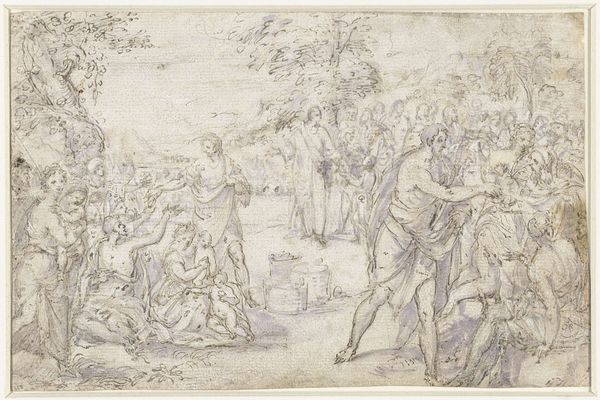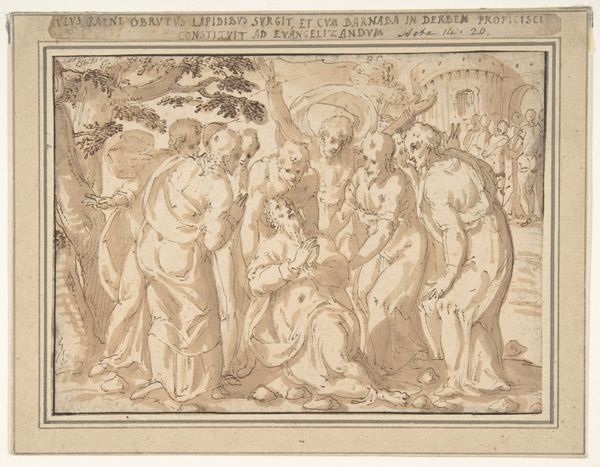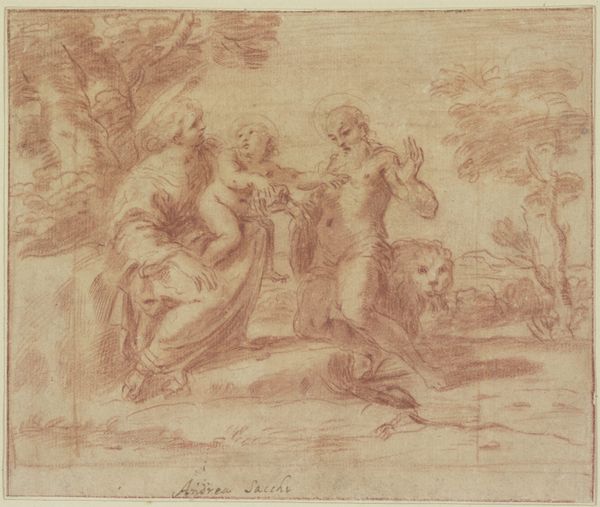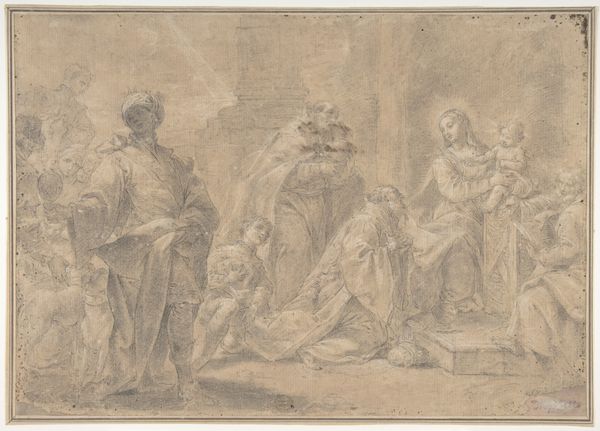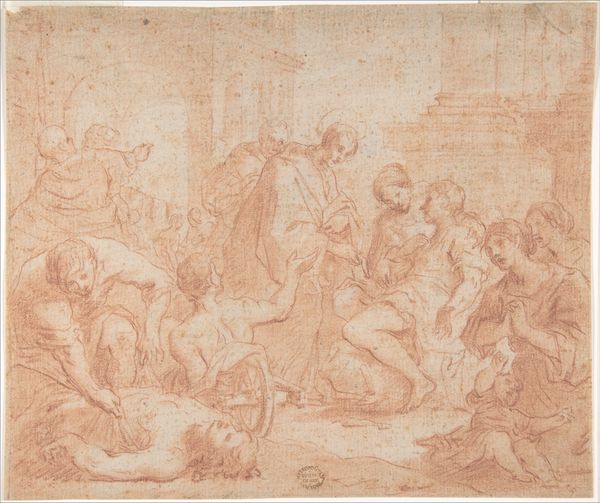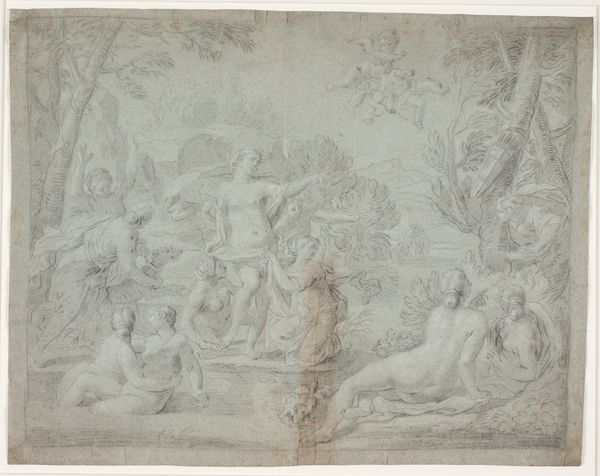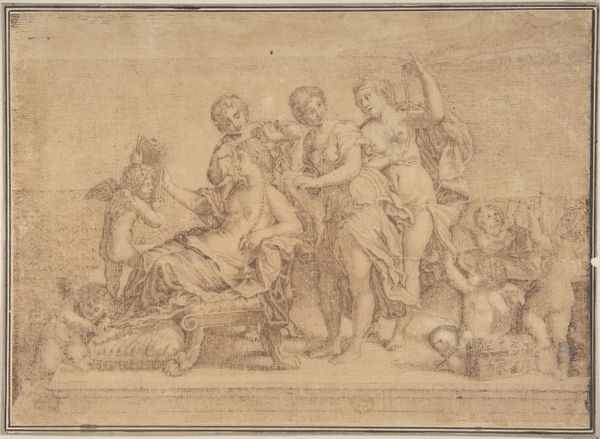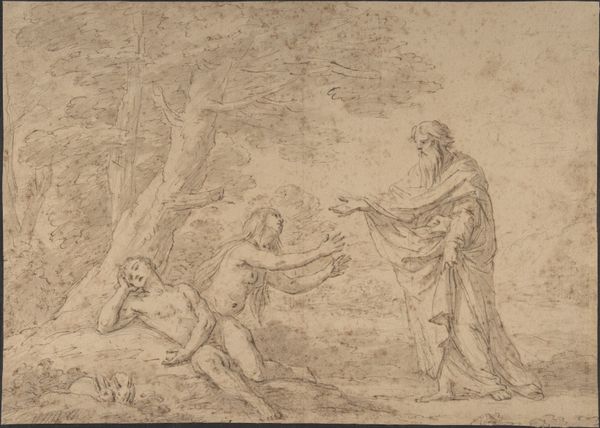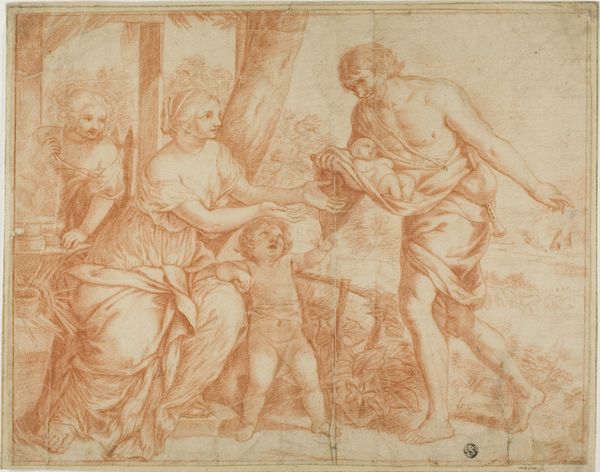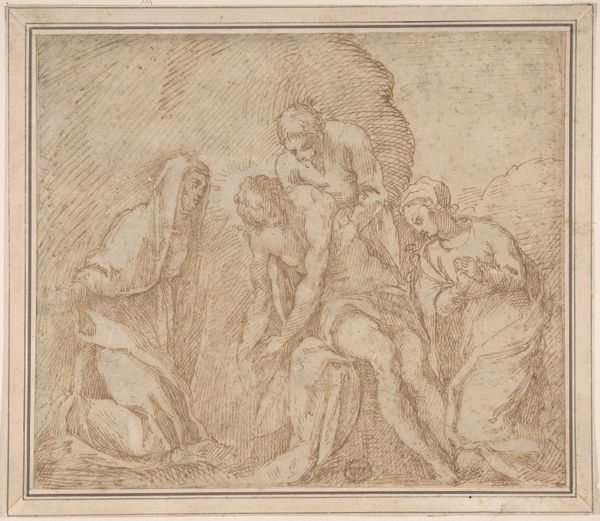
drawing, print
#
drawing
#
baroque
# print
#
landscape
#
charcoal drawing
#
figuration
#
history-painting
#
italian-renaissance
Dimensions: 9 9/16 x 15 15/16in. (24.3 x 40.5cm)
Copyright: Public Domain
Curator: My first thought is: soft. Not just in the visual sense, but almost audibly soft, like the rustling of leaves. Editor: That’s a lovely reading. We’re looking at "The Birth of Adonis" by Marcantonio Franceschini, made sometime between 1679 and 1689. It’s a drawing, so charcoal, ink—a more intimate take on a grand mythological theme, fitting for the Baroque period, no? It resides at the Metropolitan Museum. Curator: Oh, definitely intimate. It's that hazy sepia tone and those delicate lines, you know? It feels like catching a whispered secret. The way the light dances through the trees… I almost feel like I shouldn't be watching. Editor: This piece condenses a pretty brutal story of incest and transformation. Myrrha, disguised, tricks her father into sleeping with her, conceives Adonis, flees, and is turned into a myrrh tree. We see the nymph giving birth to Adonis under that very tree...it almost reads as hopeful, wouldn’t you say? The women attending to Adonis – nurturing the divine… Curator: Hopeful in that almost violently beautiful way Baroque art often is. Look at the cupids hiding in the foliage, seemingly unaware of the drama and suffering. It makes the drawing even more poignant somehow, that obliviousness. You can't help but wonder at their place. Or lack thereof. Editor: Right—they're not actively participating in the birthing scene. Their detachment could reflect the limitations of innocence—that it can exist alongside suffering but not comprehend or alleviate it. What I also find striking is the rendering of the female body – each of them idealized figures that are very conscious of a patriarchal gaze. They are figures to behold and wonder at…a clear fascination of the time, but even now, worthy of contemplation. Curator: That idealization really lends to this… suspended in time sort of feeling, doesn’t it? And I think that ultimately explains its impact, all these years later. It’s that enduring quest to define beauty. Editor: Absolutely. Franceschini captures the Baroque preoccupation with both earthly sensuality and divine mystery in just one drawing. There are conversations that we can bring into our contemporary understanding and continue reflecting upon in the years to come. Curator: A fleeting image of a story, but those fleeting images can resonate and expand— sometimes infinitely.
Comments
No comments
Be the first to comment and join the conversation on the ultimate creative platform.
